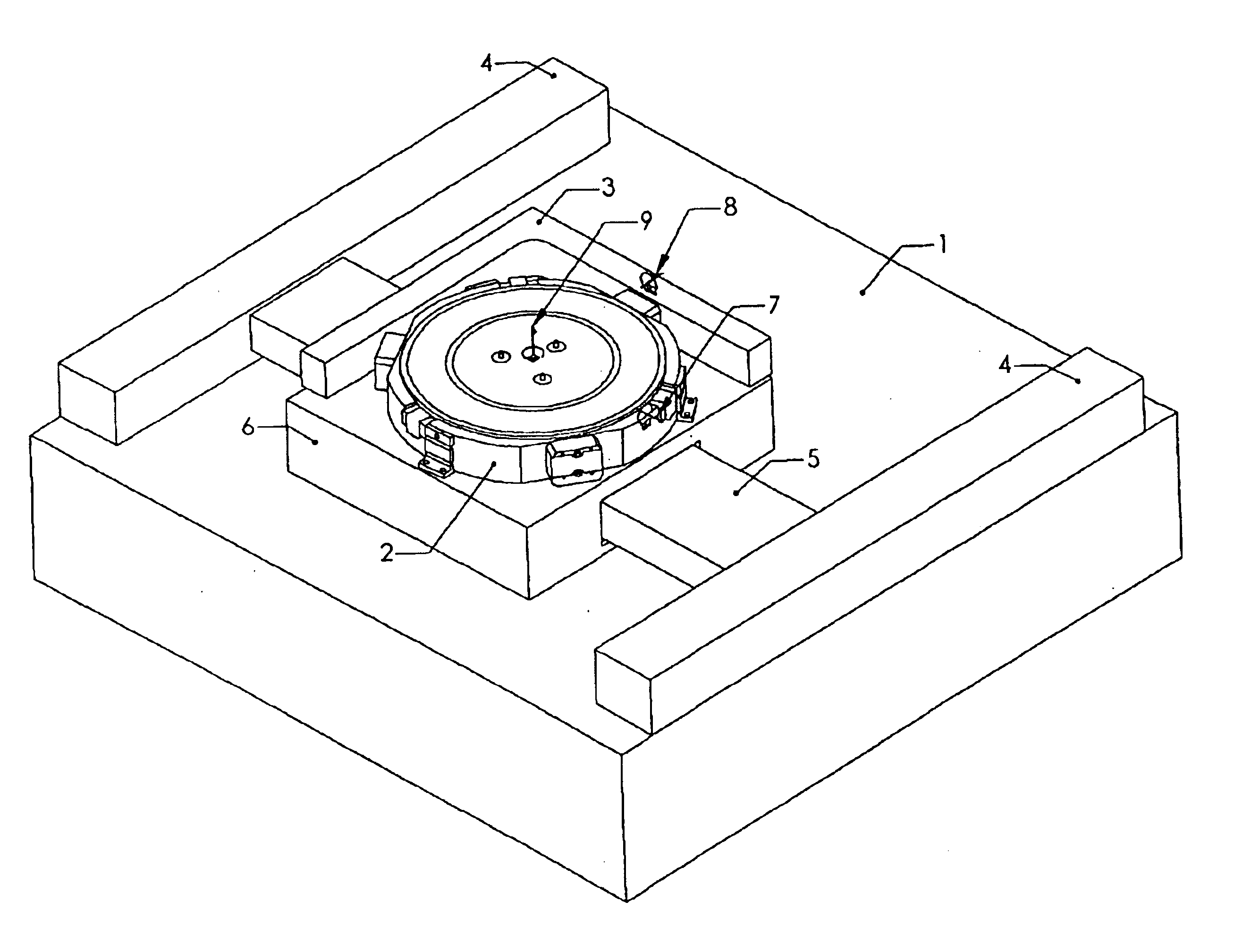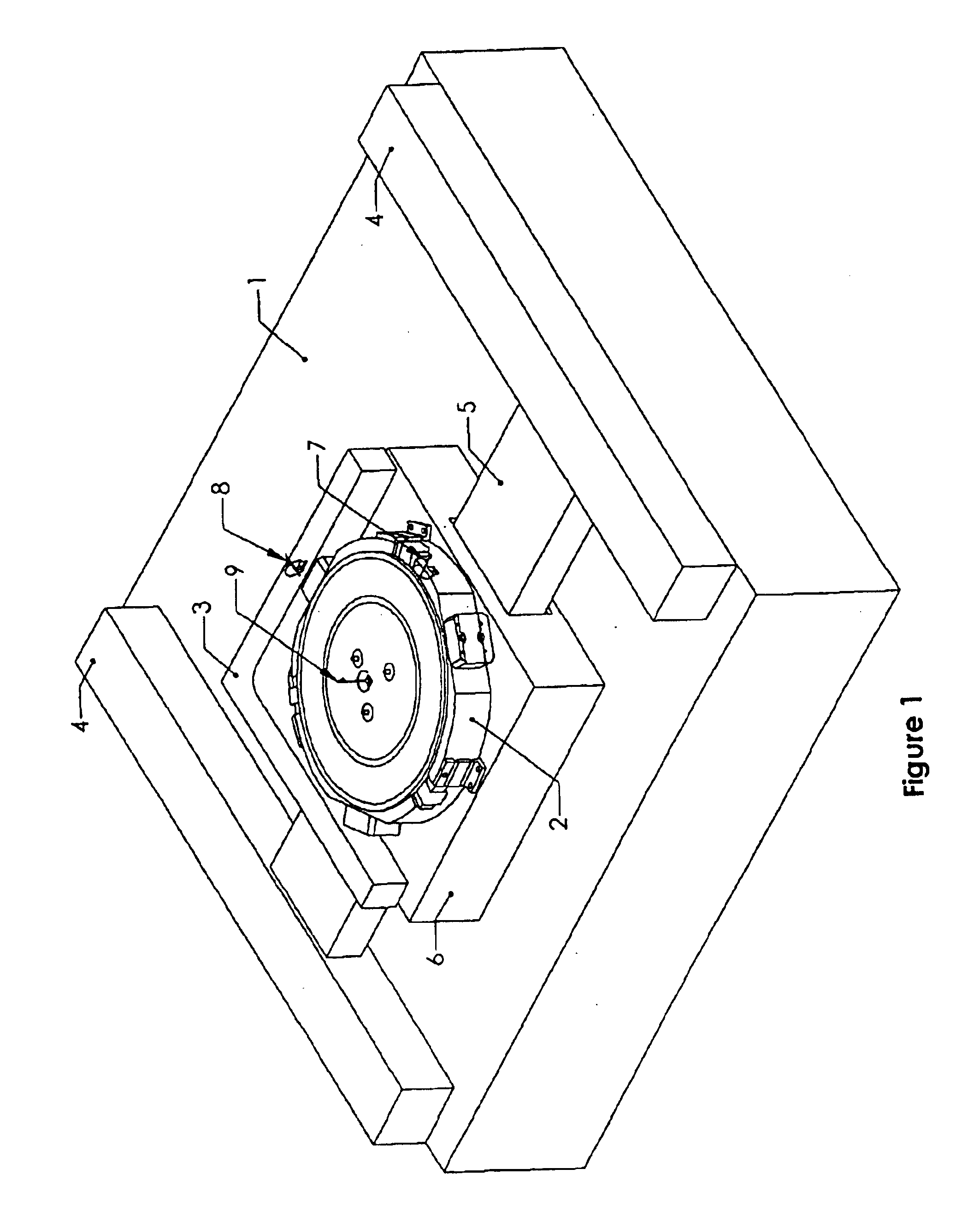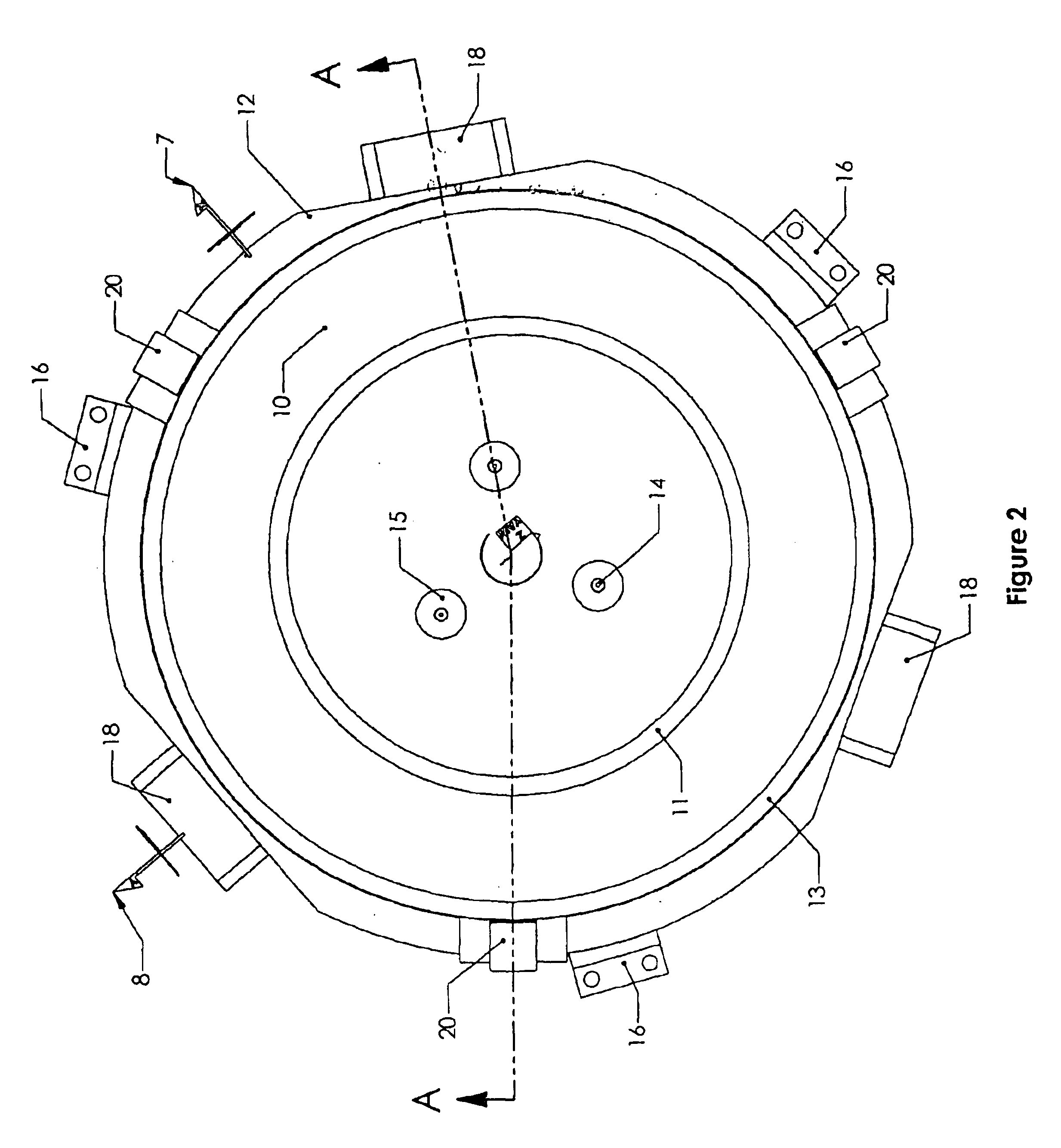Multiple degree of freedom substrate manipulator
a manipulator and multi-degree technology, applied in the direction of motor/generator/converter stopper, dynamo-electric converter control, instruments, etc., can solve the problems of increased force, loss of planarity of wafer or substrate, and warpage of the chuck surfa
- Summary
- Abstract
- Description
- Claims
- Application Information
AI Technical Summary
Benefits of technology
Problems solved by technology
Method used
Image
Examples
Embodiment Construction
With reference to FIG. 1, shown is an isometric view of an XY stage 1 with the chuck and housing mechanism 2 mounted on the stage. The basic elements of the XY stage would be easily recognized by those skilled in the art as the dual Y-axis drives 4, a single X axis drive 5 which together drive the slider 6 and whose position is typically monitored by an interferometer (not shown) that monitors slider position via L-shaped interferometer mirror 3. The stage is not part of the present invention. It is shown merely for illustrative purposes.
With reference to FIG. 2, shown is a top view of the substrate holder 10, supported by a housing 12 which substantially surrounds the sides and bottom of the substrate holder 10, and carries the substrate holder 10 in a plane on an XY stage 1. The substrate holder 10 has three wafer or substrate lift pins 14, each of which has a central hollow for connection to a vacuum pressure line for securing the wafer or substrate to the pins when the surface h...
PUM
| Property | Measurement | Unit |
|---|---|---|
| diameter | aaaaa | aaaaa |
| diameter | aaaaa | aaaaa |
| diameters | aaaaa | aaaaa |
Abstract
Description
Claims
Application Information
 Login to View More
Login to View More - R&D
- Intellectual Property
- Life Sciences
- Materials
- Tech Scout
- Unparalleled Data Quality
- Higher Quality Content
- 60% Fewer Hallucinations
Browse by: Latest US Patents, China's latest patents, Technical Efficacy Thesaurus, Application Domain, Technology Topic, Popular Technical Reports.
© 2025 PatSnap. All rights reserved.Legal|Privacy policy|Modern Slavery Act Transparency Statement|Sitemap|About US| Contact US: help@patsnap.com



